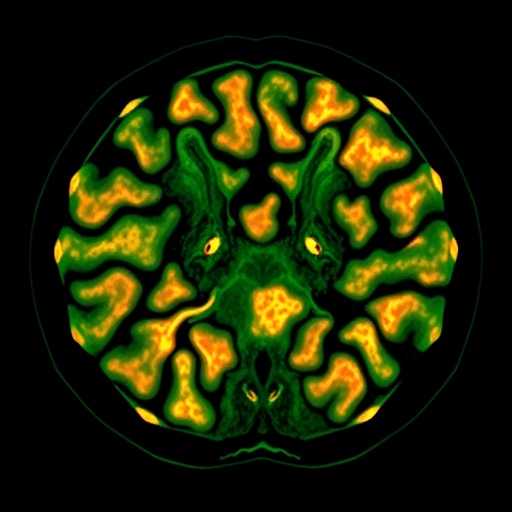Chronic hepatitis B virus (HBV) infection remains a leading cause of liver-related morbidity and mortality worldwide. Recent advancements in proteomics have opened new avenues for understanding the intricate biological interactions between HBV and non-alcoholic fatty liver disease (NAFLD), a condition increasingly recognized as pivotal in shaping liver disease profiles among patients with chronic hepatitis. A groundbreaking study by Tong et al. (2025) delves into these interactions, providing a comprehensive analysis that could inform future therapeutic strategies and enhance patient management.
Chronic hepatitis B infection affects millions globally, characterized by persistent inflammation, liver cell damage, and a heightened risk of developing cirrhosis and hepatocellular carcinoma. The interplay between HBV and NAFLD is particularly noteworthy, as studies suggest that fatty liver disease can complicate the clinical trajectory of chronic hepatitis. With NAFLD affecting approximately 25% of the global population, understanding how it coexists with chronic HBV can help identify at-risk patients and tailor clinical interventions accordingly.
The focus of the study lies on a proteomics analysis of clinical liver samples from patients diagnosed with both chronic hepatitis B and NAFLD. By employing advanced proteomic technologies, the authors aim to identify unique protein expression patterns that emerge as a consequence of these concurrent conditions. Such an approach holds the potential to unveil novel biomarkers for diagnosis and prognosis, improving the stratification of clinical outcomes in affected individuals.
One of the most compelling findings of the study is the identification of specific protein signatures that correlate with liver inflammation and fat accumulation. The researchers utilized high-resolution mass spectrometry to analyze liver tissue samples, uncovering alterations in the expression of key proteins involved in metabolic processes and inflammation. These proteins could serve not only as indicators of disease severity but also provide insights into the underlying mechanisms at play in patients with concurrent HBV and NAFLD.
Moreover, the study highlights the importance of the immune response in shaping the liver microenvironment in these patients. Alterations in immune-related protein expressions were observed, suggesting that chronic HBV infection potentially fuels a pro-inflammatory state that exacerbates hepatic steatosis. Understanding these immune interactions may enlighten future therapeutic approaches, including potential immunomodulatory strategies to mitigate liver damage and improve patient outcomes.
In addition to elucidating the pathological interactions between HBV and NAFLD, the authors emphasize the clinical implications of their findings. Given the rising prevalence of NAFLD alongside chronic HBV infections, there is an urgent need for clinicians to recognize the interplay between these two conditions. Establishing a clearer connection can guide more effective surveillance strategies and the development of integrated treatment protocols.
The significance of this research transcends its immediate findings, as it contributes to a broader understanding of liver disease complexity. It underscores the need for multidimensional approaches that consider the diverse range of factors, including metabolic syndrome components, that may influence the progression of liver diseases in patients with chronic hepatitis B. This perspective aligns with emerging trends in hepatology that advocate for a holistic view of liver health.
As we move towards personalized medicine, the implications of this study are profound. In recognizing the distinct protein profiles of patients with concurrent HBV and NAFLD, there lies an opportunity to tailor interventions that are not only effective but also minimize the risk of adverse outcomes. The integration of proteomics into routine clinical practice holds promise for enhancing diagnostic accuracy and refining therapeutic strategies tailored to individual patient needs.
The research conducted by Tong et al. sets a precedent for further explorations into the molecular basis of chronic hepatitis B and associated liver complications. By employing cutting-edge proteomics, the study opens avenues for additional investigations that may uncover new facets of viral pathogenesis and liver disease progression. Future studies could build on these findings, examining broader populations and integrating genomics and metabolomics to create a more comprehensive understanding of liver disease etiology.
In conclusion, the study provides vital insights into the complex interplay between chronic hepatitis B and non-alcoholic fatty liver disease. Its implications for clinical practice are far-reaching, promising to enhance patient care through the identification of novel biomarkers and a better understanding of disease mechanisms. As the field of hepatology continues to evolve, such integrative approaches will be crucial for tackling the challenges posed by chronic liver diseases.
The intriguing findings and techniques presented in this research emphasize the potential of proteomics in advancing our understanding of liver biology. The hope is that these insights will pave the way for innovative therapeutic developments that ultimately improve the outcomes for patients afflicted by these chronic conditions.
Understanding the implications of chronic hepatitis B combined with non-alcoholic fatty liver disease is not merely an academic exercise; it’s a critical health issue that requires the attention of healthcare providers, researchers, and policymakers. By harnessing the power of proteomics to inform clinical decisions, we can strive towards a future where liver diseases are effectively managed and mitigated, leading to healthier populations worldwide.
The need for continuous research in this arena is evident, as the evolving landscape of liver diseases remains a significant public health concern. Comprehensive clinical studies, like that of Tong et al., will be essential in guiding the way forward as we seek to enhance the quality of life for individuals suffering from the combined burdens of chronic hepatitis B and NAFLD.
Subject of Research: The interplay between chronic hepatitis B and non-alcoholic fatty liver disease through proteomics analysis.
Article Title: Comprehensive analysis of chronic hepatitis B concurrent with non-alcoholic fatty liver disease: a proteomics report based on clinical liver samples.
Article References:
Tong, X., Wan, Y., Yin, S. et al. Comprehensive analysis of chronic hepatitis B concurrent with non-alcoholic fatty liver disease: a proteomics report based on clinical liver samples.
Clin Proteom 22, 19 (2025). https://doi.org/10.1186/s12014-024-09523-3
Image Credits: AI Generated
DOI:
Keywords: Hepatitis B, Non-alcoholic fatty liver disease, Proteomics, Biomarkers, Liver disease.
Tags: advancements in hepatitis B researchchronic hepatitis B virus infectioncirrhosis and hepatocellular carcinoma risksHBV and NAFLD clinical implicationsidentifying at-risk patients for liver diseaseliver disease proteomicsliver-related morbidity and mortalitynon-alcoholic fatty liver disease interactionspatient management strategies for HBVprotein expression patterns in liver conditionsproteomic technologies in liver researchtherapeutic strategies for chronic hepatitis B




